Article from Issue #57 (May 7, 2023)
Death and Dying: Flying the Coop
by Tom Kenyon
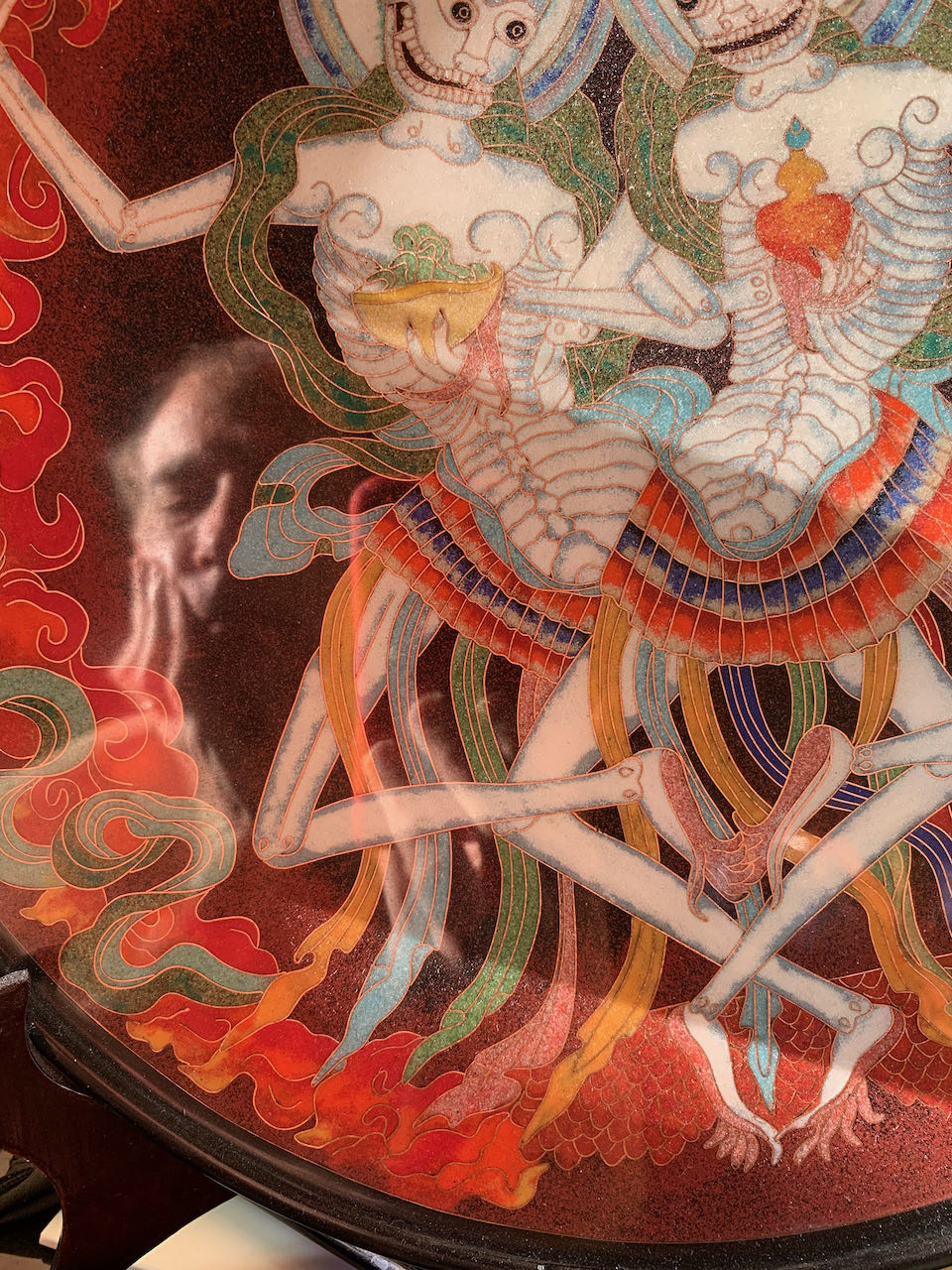
Sparrow
When I was in my early twenties I got a job as a Plumbing Apprentice to build up my savings account so I could return to the University.
As the winter fates would have it, that January was often a mix of rain and snow and I was outside digging trenches for piping that would go into the subflooring of a commercial building.
I would come home in the darkness, my jeans caked in a mixture of mud and ice. Then in the morning I would get up in the dark and take a bus back to work. That was my life five days a week.
My only other activity was reading a paperback book on healing techniques—especially hands on healing.
When I found the tiny bird, Sparrow, he was huddled in one of the trenches that I had dug the day before. He was shivering and in great distress. I picked up his frail shivering body, found some rags on site and wrapped him up. I put him between two cinder blocks to try and protect him from the cold and took him home when my shift was done.
I fed him bread soaked in milk and sent him energy from my hands as I cradled him in an attempt to bring the little guy back to health. I remember willing my lifeforce into him as if I could revive him with my own vitality. Incredibly he responded to my energy transfusions, and seemed more alert when I went to bed myself. I drifted off to sleep congratulating myself on my seeming ability to heal an animal in distress.
I did not know, then, that it was not wise to send one’s own vital force to another being.
It is far wiser and more effective to channel the universal life energy that circulates throughout the cosmos—in other words, to be a channel for healing energy rather than the source for it.
In the morning before going to work, I eagerly checked the cardboard box where I had put him the night before, fully expecting him to be hungry for more bread and milk. But Sparrow had died.
I went outside and dug a small grave in the backyard before heading for the bus stop. That day at work, I felt feverish and exhausted. I must have the flu, I told myself. But I needed the day’s pay and it was Friday, which meant I had the weekend to recover. I pushed through my body’s torment until quitting time.
When I got home, I was clearly ill and remained sick the entire weekend.
By Monday I had recovered enough to go back to work. In the ensuing weeks, I thought about Sparrow a lot and wondered where I had gone wrong. What could I have done to prevent Sparrow’s death?
It did not occur to me that actually nothing had gone wrong—other than a misunderstanding of how to send healing energies.
It was simply Sparrow’s time to die and there was nothing I, or anyone, could have done to ultimately prevent an event that all sentient beings must eventually come to terms with.
Aunt Vera
Vera was one of the highpoints of my adolescence. She lived in an old rambling house full of antiques next to a large pasture that held hidden treasures.
She showed me how to spot arrow heads, old coins and bullets from the Civil War out in the field, and I spent many hours searching for the telltale signs of lives previously lived.
Vera also showed me her fence to keep rabbits out of her garden. The “fence” consisted of cinder blocks lined up to inscribe a large rectangle with gaps between them. The “fence” was maybe a foot tall at the most.
I remember grinning when Vera showed me the fence and said “But Aunt Vera, the rabbits can hop through these gaps or right over the cinder blocks.” Vera looked at me with the most interesting look and said “Tommy, when you put your mind to it, you can do amazing things.”
I believe she was in her late seventies or early eighties when she roofed her entire house by herself. And every now and then she would bake cookies and take them to what she called “the Old People,” who were in the local nursing home. By this point, Vera had shrunk so much that she had to sit on pillows to look over the dashboard of her car.
The family story around Vera’s death was most fascinating. The night before Vera died, she evidently called her daughter and asked her to come by and visit her in the morning. When her daughter arrived the next day, she found that Vera had died. On the kitchen table was a note along with a spread of food for her own wake! Vera had evidently been cooking for days. And the note gave instructions for her wake and pointed out the dress she wanted to wear, which she had ironed the night before.
Desperate Flight
When I was in my Junior year at the University, I got a frantic call from a girlfriend of mine who lived in the women’s dorm, not far away from mine. She said she had been gripped by a sudden intense feeling to hurl herself out the window to her death. And she was really frightened that she might do just that. My-friend lived on one of the upper floors of her high rise dormitory, and had she throws herself from the window, she would have surely fallen to her death.
As I tried to talk her out of this strange mental state, she gasped and cried out “Someone just threw herself out of the window right above me and she fell to the ground right in front of my window!” Indeed, her dorm mate, whom she had never met, had ended her life by taking a desperate flight out of her window and fallen like a Galilean cannon ball to her death.
I mention this strange incident because we are all surrounded by a sea of thoughts and emotions that are not ours. Under the right circumstances, we may find ourselves thinking and feeling other people’s thoughts and feelings. How much of this we have to contend with depends on our degree of sensitivity.
Thor
Thor was not his real name, but he looked strikingly like depictions of the Norse god. He had a long mane of curly blond hair, chiseled features, a strikingly muscular body and penetrating hypnotic blue eyes.
Being in his presence was like being in the presence of a god born from the fiery inferno of the telluric worlds. And Thor had the most formidable energy of any client I had ever seen. And he also had a childhood that was marred by constant brutality as well as emotional and sexual abuse—the most I had ever seen (still to this day I might add).
Thor began to work with me hoping to untangle the tangled emotional net that had shrouded him for years. It was intense and demanding work. And it became quite clear to me that underneath his powerful demeanor and mesmerizing energy, Thor was a suicide risk.
I always had clients in danger of taking their own lives agree to a Suicide Contract. The Contract required them to contact me by phone or in person if they felt that they were going to kill themselves. I, in turn, agreed that I would not try and talk them out of suicide but help them get clear that this is what they really wanted to do.
I knew that getting hold of me and finding a time to talk was not an easy task—even back then. And in some cases the urge to take one’s own life would pass if enough time had passed for the emotional distress to subside. And if they did actually get hold of me I knew that in most cases I would get them to see that their fantasies and ideation of suicide were born out of desperation. I also knew that even in the face of deep despair there were always other routes out of such an emotional quagmire. It was just that when someone is overcome with so much unhappiness and despair, creative solutions don’t often present themselves to such a troubled mind.
Finally, I could confidently make such a contract with a client because it was congruent with my own feelings on the topic. While I think there are always options other than suicide, there are some rare situations where I think Rational Suicide can make sense for an individual.
A few weeks before I left for a Continued Education training, I told Thor about my needing to skip an upcoming session. And the week before my departure I went over the Suicide Contract with him one more time. He verbally agreed.
The next week, I left for the nation’s capital where the training was being held. About half way through the training, the topic turned to Death and Dying. And just as the instructor started the session, a staff person walked up to the podium and handed her a piece of paper. She said to the group, is Tom Kenyon in the room? I stood up and said “Yes.” She motioned me to come up and handed me the note.
It was from Thor’s sister. The note said that he had committed suicide and to please call her. I left the conference room and went to a line of phones (this was way before cell phones). We talked for a bit and I got a sense of what had happened. I recall her thanking me for what I had tried to do for her brother.
I was pissed.
I had never lost a client before (or since, for that matter). And my anger was fueled by the knowledge that if Thor had actually called me— together, he and I, could have found safe passage through the current hell he had found himself in. I was beyond myself with frustration and grief.
When I got home from the conference I had a vividly clear lucid dream about Thor. In the dream he walked into my bedroom and woke me up. He said he was very sorry for taking his own life and asked me if I could ever find a way to forgive him. I told him of course I forgave him and wished him well in the other world. Thor smiled and left the bedroom. I woke up from the dream and looked over at the clock. It was around 5AM.
Later that day while at the grocery store, a neighbor asked me if I was still doing that counseling stuff. I said “yep” and he said that he’d like to schedule a session sometime soon. I asked why, if he didn’t mind, and he proceeded to tell me a story that absolutely blew my mind.
He said that he drove by my house very early that morning around dawn and saw an athletic dude walk up to the door that led to my office. He was slumped over and seemed very depressed.
My neighbor then ran his errand and drove back by my house a short time later. The same guy walked out of my house smiling and started skipping down the street!
I was stunned and asked him to describe this dude in detail. It was a match as was the time of day when I had had the dream.
The encounter reminded me of an incident reported by the eminent researcher into death and dying, the late psychiatrist Dr. Elizabeth Kubler Ross.
One evening Dr. Ross encountered a woman who looked remarkably like a patient of hers that had died months before. When Dr. Ross asked her if she was that person, she answered in the affirmative. Dr. Ross then invited her into her office where they talked about death. In a stroke genius, Dr. Ross asked her to sign her name on a piece of paper to have some objective physical evidence to preclude any thoughts that she might have merely had a stress-induced psychotic episode. When the woman left, the signed piece of paper remained.
People are like stained glass windows. They sparkle and shine when the sun is out,
But when the darkness sets in, their true beauty is only revealed if there is a light within.
Elizabeth Kubler-Ross
My Mother
My mother died from lung cancer, ironically acquired through my father’s second-hand smoke.
My mom was a very strong grounded and practical woman—not prone to New Age musings. But during the next to my last visit to see her, she confided in me that she had had a lucid dream in which she saw her next life. And she, said, with emotion in her eyes, “I am going to be happy.”
At one point toward the end of her life, Hospice was brought in to help my mom stay at home. I received regular phone calls from the hospice nurse updating me to my mom’s condition. One fall day I received a call from the nurse, and she said if I wanted to see my mom alive, I needed to come now.
It was over a two hour drive from where I was in North Carolina to the coast where she and my family lived. I was wracked with emotion as I drove East.
When I arrived, my mom was in a side bedroom with the hospice nurse.
My father and my brother, both of whom were frightened of death and evidently didn’t know what to do in the face of my mother’s death, were sitting in the living room watching TV.
Life really does, at times, seem to have an ironic sense of humor. They were both intently watching an afternoon soap opera to take their minds off my mother’s death. But on the TV, the main character was in the throes of dying! As Lord Byron once quipped…“life is stranger than fiction.”
As I walked into the living room, I said hi but they barely looked up. I went into the bedroom where my mother and nurse were, and the nurse left to give us some time together saying “If you need me, I’ll be in the other room.”
I sat down beside the bed and took my mother’s hand in mine. Her hand was cold, and she looked so frail…like I had never seen her before. She then opened her eyes, smiled and said “You came.”
“Mom, of course I came.”
“Tommy, I’m really thirsty. Could you go to the store and get me some cold apple juice?”
“Of course.”
I proceeded to the car, drove the few minutes to the local store and returned with cold apple juice and a cup of ice. When I walked into the room, the hospice nurse was sitting next to my mom.
My mom’s eyes were closed and her hands had been folded onto her chest. The nurse said “She’s gone.”
She must have seen the grief in my eyes because she said, “Don’t’ feel bad. I find that patients often send their most beloved family member on an errand before they take their last breath. I think it may be that they find it easier to let go that way.”
The nurse motioned me to the chair beside my mom’s bed and left the room. It was just me and my mother. And then I noticed how truly peaceful she seemed.
As I relaxed just sitting there with her, I noticed that the room was filled with pink light—one of her favorite colors. I just sat there in clouds of pink for the longest time.
I was there with my departed mother until twilight descended and daylight irrevocably surrendered to night. And then seemingly out of nowhere, I felt surrounded by an all- encompassing sense of love and a deep feeling of peace.
My Father
Many years after my mother died, I received a phone call from the VA Hospital where my father had been admitted. The on-call doctor told me that I needed to get there ASAP if I wished to see my dad alive.
Once again I drove toward the coast and found my father bedridden, unconscious and connected to a plethora of IV’s and monitors. The sight of him in this state made my stomach sink. I felt that the force of gravity had somehow inexplicably increased, and it took a herculean effort for me to stand. The doctor stepped in and asked to speak with me in the hallway.
I remember his words with a surgical clarity that still strikes me to this day. He said “Your dad is seriously ill, and I don’t expect him to survive the night. I suggest you arrange for a funeral home.”
Back at the family home, I did indeed call a funeral home per the doctor’s suggestion and was instructed to call them back when my dad had passed.
Upon returning to the hospital, my father had not yet died although he was still unconscious. The doctor once again stepped into the room and motioned me into the hallway.
“Your father is still gravely ill, but there is nothing more we can do for him. And he will need to be discharged soon so you need to find a nursing home. I suspect he will be on a respirator for the rest of his life. And,” he added, “you need to understand that this will be temporary. You need to get his affairs in order.”
Later that day I visited a local nursing home and arranged for my dad to be transferred from the hospital to a private room.
I visited my father almost every day, and just sat with him the only sound the pumping whirl of his respirator.
One day the respirator had been removed and my dad seemed to be breathing on his own. He opened his eyes, acknowledged my presence and then closed his eyes slipping again back into unconsciousness.
A few weeks later, my dad was not in his room. Fearing the worst, I went to the nurse’s station and the on-duty nurse said he was in the commons room.
My dad was sitting up in a chair though clearly weak. As I sat down next to him, he said “I hate this place. I’m going to get out of here.”
Then a few days after that, I found him drinking some coffee in the enclosed garden space. He asked me if I wanted some, but I declined.
He then asked me if I remembered Vera. I said yes, very clearly.
He said “You know she died, right?”
“Yes, dad I know.”
“Well she’s been coming to me and we’ve been talking,” he said.
“Wow, Dad. What did she say?”
“She said death is not like we think it is. And your mom’s been coming to me as well.”
“And what did she say,” I asked.
“She’s been telling me that I need to get out of here, go down to New Orleans and find me a wife.”
“Really? That’s amazing.”
“Could you find me an apartment so that I can get out of here?”
“Yep, I can do that.”
Of course I was thinking that there was a good probability that my dad could just be delusional. But this was also offset by the fact that I was familiar with communications from the dead through my encounter with Thor and while processing similar experiences with clients.
A few weeks later, I moved my dad to an apartment near me in Chapel Hill so that I could be closer and still work my psychotherapy/counseling practice. The apartment was conveniently located next to a bus stop where my dad could catch a bus into town and save me from having to drive him everywhere.
I had opened a savings account in my father’s name as soon as he was discharged from the hospital. And every one of his retirement checks went into the bank. When my dad got out of the nursing home he had accrued more money than I think he had every had in one lump sum.
One day during a visit to him at his apartment, I noticed a late model Cadillac in the driveway. My dad always drove a Cadillac except during family financial downturns, and I suspected that he had perhaps purchased one again.
Upon entering the apartment, my dad asked if I had seen the car. I said yeah.
He said “She’s a beauty, right.”
“Yep.”
“Want to take a spin?”
“Sure,” I said somewhat tentatively.
My dad grabbed his cane and the keys to the car. We walked to the car and he got in the driver’s side.
I got into the front passenger seat with a bit of trepidation. But I needn’t have worried. My dad drove impeccably. In fact, had I been an examiner at Motor Vehicles, I would have unquestionably given my dad his license.
A short time later, my father informed me that he would be taking a road trip to New Orleans…you guessed it…to find a wife.
My dad did drive down to New Orleans and spent a short time there. He did not find a wife. He did, however, live several more years proving the doctor wrong.
Do not go gentle into that good night,
Old age should burn and rave at close of day;
Rage, rage against the dying of the light.Though wise men at their end know dark is right,
Because their words had forked no lightning they
Do not go gentle into that good night.Good men, the last wave by, crying how bright
Their frail deeds might have danced in a green bay,
Rage, rage against the dying of the light.Wild men who caught and sang the sun in flight,
And learn, too late, they grieved it on its way,
Do not go gentle into that good night.Grave men, near death, who see with blinding sight
Blind eyes could blaze like meteors and be gay,
Rage, rage against the dying of the light.And you, my father, there on the sad height,
Curse, bless, me now with your fierce tears, I pray.
Do not go gentle into that good night.
Rage, rage against the dying of the light.Dylan Thomas (1914-1953)
My encounters with death can be divided into three categories—those beings who were dying, those who temporarily sidestepped death and those who interacted with me after they had clearly died. Some of these encounters really caught me off guard. And as I wrestled with the philosophical considerations around these encounters it became clear to me that death is not as clear-cut as many of us believe it to be. Indeed, the line between the living and the dead seems rather ephemeral to me at this point.
But my encounters with two Tibetan Buddhist masters threw the doors of my perception wide open when it came to questions regarding the meaning of life itself and the the nature of the death realms.
The Two Tibetans
Tuku Urgyen Rinpoche
Years ago, now, I was teaching my first workshop in Jackson Hole, Wyoming. Deidre, my organizer for the event, put me up in a spare room in her house. And sitting on a table in the corner of the room was an exquisite bronze statue of Manjushri.
Manjushri is a potent figure in the Tibetan Buddhist pantheon. And he is often depicted holding a sword in one of his hands. He carries the sword, not to harm, but to cleave ignorance for those aspiring to attain liberation.
Around the neck of the statue was a white silk kata. Katas are often given as greetings and an honoring by Tibetan Buddhists. Deidre explained that the kata had been given to her by her lama and teacher, Tulku Urgyen Rinpoche, who had recently died.
The word Rinpoche means teacher while the title of tulku is afforded a lama who has conscious recollections of his or her previous life. Sometimes there is an elaborate test to determine if the lama’s recollections are accurate or not, sometimes including being presented with various objects that the lama used in the previous lifetime. Tulkus play an important role in Tibetan Buddhism because they continue the lineage of Buddhist masters in an unbroken line. Tulkus are living embodiments of a consciousness that has transcended time, space and death.
That night I slept soundly until around 3am in the morning. I was awakened by the clear sound of a voice speaking to me, but the voice was not coming from outside—rather it was coming from within my own mind.
The disembodied voice said “I am Tulku Urgyen. You have some misconceptions about Tibetan Buddhism. Would you like me to correct them for you?”
I said “Yes, Tulku Urgyen, that would be wonderful.”
Tulku Urgyen told me to sit up so that my spine was straight and proceeded to clarify points about the dharma (the way of the Buddha) until near dawn.
Tulku Urgyen proceeded to wake me up every night around 3am for a few days in a row. I clearly had a lot of misconceptions!
After two days into the workshop I was tired, and when Tulku Urgyen showed up at 3 in the morning of the third day to instruct me again, I said in a distinctly whiny voice…”Tulku Urgyen I have to teach again tomorrow. Can’t this possibly wait until the workshop is over?”
He quipped back “Yes, but the next auspicious time for you to receive these teachings will be in 10,000 lifetimes.”
I sat up, spine erect with hands in meditative position. “I am ready Tulku Urgyen!”
Tulku Urgyen was a Vajrayana practitioner, one of the most exalted methods in Tibetan Buddhism, and he was also a Dzogchen practitioner. Dzogchen is considered to be the pinnacle of Vajrayana practices and also the most rapid method for attaining supreme enlightenment within the Tibetan Buddhist tradition.
When a Dzogchen practitioner dies there are often (but not always) various types of phenomena that can surround his or her death. These can range from a small crack at the top of the skull caused from the impact of his or her mind-essence rapidly shooting up through the crown chakra into the celestial realms. This small crack in the skull is a side-effect of Phowa—a method for conscious dying considered a vital skill in Tibetan Buddhist traditions.
Sometimes the body of a Dzogchen practitioner does not decompose for several days. This phenomenon also appeared around the death of the yogic master Parkmahansa Yogananda (the famous yogi who brought Kriya yoga from India to the West).
There can also be unusual weather anomalies. On rare occasions a master practitioner can choose to manifest the Rainbow Light Body whereby his or her physical body reverts back to its primordial nature—light.
Tulku Urgyen died in Nepal where he had sought refuge from the Chinese invasion of Tibet. He lived and taught in the Kathmandu valley ever since that time, and that is where he died.
Anyone who has been to Kathmandu will recall that the air quality is terrible from all the fires that are used for cooking and for heat in the winter. When Tulku Urgyen died, the skies over the Kathmandu valley cleared. The sky was inexplicably blue and free from clouds for several days. From a mythic and symbolic perspective, this phenomenon pointed to a favorite metaphor in Tibetan Buddhism—the clear sky as a symbol for the natural state of enlightened mind.
I have continued to have experiences with Tulku Urgyen from that very first day I encountered him from beyond the grave. His mind-essence and compassion are seemingly inexhaustible. For those interested in his teachings, I have listed some of his book titles in the Resource Section.
Yabsang Rinpoche
My wife, Judi, and I met Yabsang on one of our trips to Tibet many years ago now.
Yabsang was a remarkable healer and a master in the Vajrapani tradition. Vajrapani is an archetypal figure in Vajrayana Buddhism that represents the power of all the Buddhas. According to Tibetan Buddhism Shakyamuni was the Buddha of our era, but there have been innumerable Buddhas since the beginning of time including both male and female Buddhas who appeared and continue to appear in other worlds throughout the multiverse.
Before meeting Yabsang I had already been working with Vajrapani in tantric meditations for over a few year. But I had no idea that Yabsang was a holder of that lineage until a short time before I met him.
I was in Lhasa with my wife, a group of students who had come with us to Tibet and our guide, Ken Ballard. Ken had a arranged a private meeting with Yabsang, and when we arrived Yabsang was flanked by a group of his monks who were fanning burning incense with peacock feathers into large plumbs of heady aromas.
Peacock feathers are used a lot in Vajrayana ceremonies to symbolize the power of pure Mind to negate and transform poisonous thoughts and emotions into enlightened states of consciousness. This symbolism is related to the biological fact that peacocks are able to eat poison without being harmed.
Yabsang was holding a silver disced mirror, a symbol of the reflective power of pure Mind to reveal to us our own true nature. The ceremony was deeply primal as its origins were rooted centuries earlier to a time when Buddhism comingled with the indigenous shamanic tradition in Tibet—the BonPo.
The ritual involved stepping up before Yabsang, who held the mirror in front of you. As you gazed into it, Yabsang chanted various mantras including the mantra of Vajrapani (the power of all the Buddhas). The belief here was that the power of all the Buddhas—including all those who have ever been, are now in existence or will be were channeled to you to empower you to rise upward in consciousness. You then spat on the mirror and the mirror was washed in water. You were then handed a vessel holding clean water, which had been blessed. You swished the water inside your mouth and then spat it out into a trough. Finally, Yabsang held up the mirror again, and while you gazed into it he chanted a string of mantras.
When it was our turn to receive the blessing, Judi and I stepped up before Yabsang and experienced the ritual for ourselves. I was stunned by the healing power of this lama and it was clear to me that we were standing before a true tantric master who had created a Buddha-field of healing through this ancient ritual.
As Judi and I stepped to the back of the room, I watched Yabsang complete the ritual. And it became abundantly clear to me that as Yabsang uttered the final mantras of completion, we were all in the presence of a pure emanation of Vajrapani himself.
I then had an out-of-the-blue impression that Vajrapani had just asked me to donate $2,000 to Yabsang. I was a bit taken back, but when one enters into a tantric relationship with a tutelary deity like Vajrapani, one does not dismiss requests from such beings lightly.
I leaned over and whispered Vajrapani’s request to Judi to see if she agreed. Without missing a beat, she said yes.
When the ritual was completely finished I asked one of our translators to translate something to Yabsang word for word.
It was very odd moment for me. I was in between the worlds where I felt that I was standing before two beings. One was a lama in his eighties and also, at the same time, before me a clear and potent emanation of Vajrapani himself.
I said “O great guru. I see clearly that you are a pure emanation of Vajrapani. And we have been blessed by your presence. My wife and I wish to gift you with two thousand dollars to use as you wish.”
The translator spoke the message to Yabsang and without missing a beat, Yabsang responded. And the translator translated his words: “I will use the money to build a new bridge to our monastery. Every year when pilgrims come to the monastery for healing, some of them, along with their yaks, fall to their deaths. The new bridge will save many lives. And I will also commission a statue of Matreya, the future Buddha of this world.”
While two thousand dollars was a lot of money for Judi and me at the time, it was a staggering sum for a monastery in Tibet.
On our next trip to Tibet, we visited Yabsang’s monastery that was perched on a high ledge in a very mountainous area. As we pulled up to the monastery, sure enough the old rope bridge across a deep ravine had been replaced by a reinforced concrete bridge. Yabsang had been true to his word.
When we pulled up to the monastery, we were informed that Yabsang was quite ill. He had requested that we visit him in his quarters. Upon entering his room, Yabsang was sitting in his bed with an attendant at his side.
After greetings were exchanged, I felt an impulse to sing the chant I had come up with when I had engaged tantric meditations with Vajrapani. I pulled out my bell and dorje and began to chant to this powerful tantric deity. Yabsang motioned to his attendant to hand him his bell and dorje and began to chant along with me. It seemed to me that we were chanting the same words, with the same intonation and the same rhythm. For a moment I was suspended in another world that transcended time and space where the clear luminous light of all the Buddhas was clearly visible.
After I reoriented myself back to the physical world, I thanked Yabsang and our group went back to one of the outside courtyards. We asked our translator what was wrong, and we were told that Yabsang had a virulent infection but the local physicians had exhausted their means of healing. Yabsang was dying.
It was then that a most amazing thing happened.
Ken explained to our group the situation and said that perhaps we could gather our resources together in order to get Yabsang to medical treatment in Lhasa. Everyone contributed something and some in our group were rather wealthy individuals who added the lion’s share to our spontaneous offering. It was an instant manifestation of generosity.
Shortly thereafter Yabsang was transferred to a hospital in Lhasa. And we went on with our tour of Tibet. When our group returned to Lhasa for the final leg of our journey, Ken told Judi and me that Yabsang was not doing well and had been put on a morphine drip. The doctors said that he was dying, and all they could offer was palliative care at this point.
Yabsang had already designated his successor and was now in a private room with his attendant waiting for death.
I sent word through Ken that I would come to Yabsang and offer a sound healing session if he wished. Word came back that he would like that.
Early that evening Judi and I went to Yabsang.
I pulled out my crystal bowl, bell and dorje and other implements and placed them on the floor in front of me. As I centered myself to become as clear and open a channel as I might possibly attain, I psychically saw a wild horse from the Tibetan plateau in my mind’s eye. I began to chant to Hagriva, the Tibetan Horse Headed God of Healing. And as the low guttural sounds of the chant rolled out of me, I psychically saw hundreds of wild horses descending the hills that surrounded Lhasa toward Yabsang in his bed.
When we left, I told Judi what I had seen and said that I had no idea what would happen, but something profound was in the air.
The next morning, Ken dropped by to tell us that Yabsang had fully recovered and was now wandering the halls of the hospital giving healings. He also asked to see us to give us a gift that he had ordered be brought from his monastery to Lhasa. We dropped by later that day after word came that the gift had arrived.
When we entered his room, Yabsang was sitting up alert and was no longer on the morphine drip. Through our translator Yabsang told his attendant to hand me and Judi a large yak blanket that had been handwoven. Yabsang explained that the blanket was a “Magic Blanket,” and that by sitting on it we would receive a boon to meditation.
As we left the room, the translator told us that the blanket had been blessed by Yabsang and that it was a very auspicious gift rarely given.
My first encounter around death with Yabsang had centered around his miraculous recovery. But when Judi and I took a group to Bhutan it was a different type of encounter.
Bhutan
Our guide, Ken, had taken us and a small group on a rare pilgrimage to one of the historical treasure troves of Tibetan Buddhism. I say rare because Bhutan only lets a relatively few visitors a year past its borders.
We had arrived for the annual birthday festival in honor of Padmasambhava, the tantric master also known as Guru Rinpoche who brought Buddhism into Tibet in the 7th Century AD. He also brought Buddhism into Bhutan and for a time lived there with his consort, the great yogini Yeshe Tsogyal. Many other tantric masters also came to and lived in Bhutan. The great tantric master Dilgo Khentse, one of Tibet’s greatest yogis of modern times also lived here after seeking refuge from the Chinese invasion of Tibet. The place was energetically charged.
One of the monasteries we visited was well known for its unusual method for transmuting difficult karma. Pilgrims would don a heavy chainmail and proceed to circumambulate the inner temple. The belief here was that by combining hard physical exertion while holding an intent for working off some of your karma, the act would do just that.
The chainmail was particularly heavy being made of iron. And the monastery was at a high altitude where oxygen was on short supply. As each member of our group undertook the circumambulation, I followed beside them to be an energetic support. By the time I had circumambulated the temple several times, I was starting to get woozy. As I joined one of the few remaining members of our group, I distinctly saw Green Tara (a Buddhist tutelary deity associated with compassion and liberation) at the end of the long hallway. I told myself that I must be hallucinating.
At this point, I distinctly heard Yabsang’s voice in my mind. “Remember your gold body.”
The gold body is one of our subtle energy bodies and, under the right conditions, it is possible to draw on its energy when needed. I recalled having to draw from this gold light when I did a tantric ritual to Matreya (the future Buddha) at a monastery perched high up some cliffs in Tibet years ago. There was very little oxygen at this high altitude, and I didn’t know how I could possibly sing given the fact that I could hardly breathe! But by drawing on my gold body, I was suddenly energized and was able to sing like I could at lower altitudes. This was the phenomenon that Yabsang was referring to.
Indeed as I shifted my attention to the gold body, I was renewed with energy. But as I rounded a corner, I had the distinct impression that Yabsang was dying. As I passed Ken I said that we needed to pray for Yabsang because he was dying. Ken glanced at his watch and made a note of the time.
The next morning, Ken came to our room and said that he had called Lhasa and indeed, Yabsang had died within the hour of the time Ken had noted on his watch.
Later that day I guided our group through an intense tantric ceremony that would be demanding both for me and for those participating. As I laid out my implements, I heard Yabsang speaking in my mind once again. His comment was pithy and to the point: “I will give my aid to everyone participating in this ceremony.”
I was stunned.
From the Tibetan Buddhist standpoint, when one dies one enters what is called the Bardos, sometimes referred to as the Bardo of Death. The classical understanding is that it takes forty days to transit the Bardos. One of the skills developed by Vajrayana practitioners, like Yabsang, is to recognize the Clear White Light of pure Mind when passing through the death realms thereby attaining supreme enlightenment. And some have developed the ability to enter the Pure Lands of the Buddhas and avoid rebirth into the lower realms—including Earth. It takes immense skillful means to transit the death realms to accomplish such an undertaking—as you can well imagine.
That Yabsang would undertake helping me and our group to accomplish such a demanding tantric meditation while he, himself, was going through the Bardo realms was mind boggling.
Like Tulku Urgyen Rinpoche, Yabsang Rinpoche had attained a level of attainment that transcended death as well as the constraints of perceived time and space.
I have, over the years, continued to have conversations
with Yabsang, especially when I was sitting in meditation on his
blanket. 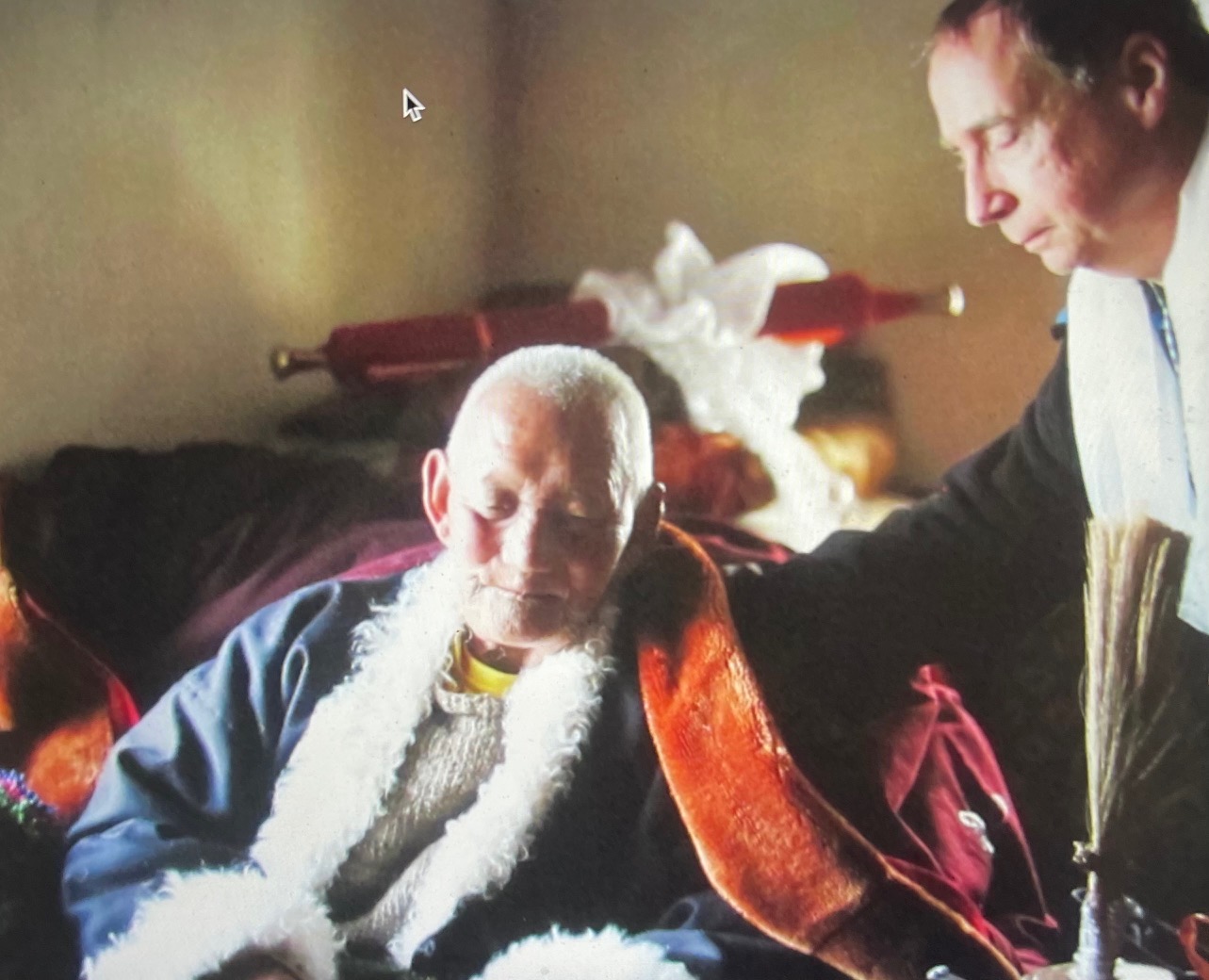
A photo of Yabsang and me in his quarters
Resources
Here are some resources for those of you who wish to explore the topic of death and dying in more depth…
Dr. Elizabeth Kubler Ross
Dr. Ross’s official website:
An article about Dr. Ross’s work by David Sunfellow
https://the-formula.org/elisabeth-kubler-ross-on-life-death-near-death-experiences/
An article about Dr. Ross’s work on Near Death Experiences by Kevin Williams
https://near-death.com/elisabeth-kubler-ross/
A video interview with Dr. Kubler
https://www.youtube.com/watch?v=8uNGhCBOmCg
Other Resources
Scholarly articles and books about death and dying from a variety of authors
https://www.oxfordbibliographies.com/view/document/obo-9780199828340/obo-9780199828340-0144.xml
Magis Center Peer Reviewed 5 credible cases of NDEs
https://blog.magiscenter.com/blog/credible-near-death-experience-stories
After Death Communication Research Foundation
https://www.adcrf.org/index.html
Rational Suicide
Scholarly Articles and Links on the topic of Rational Suicide
https://pubmed.ncbi.nlm.nih.gov/3734649/
National Institute of Health: articles and links on the topic of Rational Suicide
https://www.ncbi.nlm.nih.gov/pmc/articles/PMC6843265/
Tibetan Buddhism on the topic of death and dying
Tulku Urgyen Rinpoche
There are several books by Tulku Urgyen available at various websites and stores. Many of them are available as eBooks or paperbacks from Amazon.com I recommend his two books: As It is Vols 1 and 2 as well as his short treatise on the Bardos.
Natural Liberation: Padmasambhava’s Teachings on the Six Bardos
This is a watershed translation of Padmasamhava’s definitive text on the death realms or Bardos. It is available as a paperback book from numerous sites. It is also available as an eBook on Amazon.com.
A Video Teaching on the Bardos
Yeshe Kaytup, more commonly known as Lama Lena, is a teacher of Direct Mind Perception meditation (Dzogchen & Mahamudra) and a lineage holder of several Tibetan Buddhist traditions. Her informal style is precise and direct and she is revered by students around the world for her exceptional ability to share profound teachings in a clear, poetic, and humorous way.
Below is a link to a talk given by Lama Lena called How To Die for those interested in the Tibetan view on death and dying including how to go through the death realms or Bardos: Lama Lena’s online teachings are offered free of charge and she also receives donations (called dana, which expresses the enlightened quality of generosity.
https://lamalenateachings.com/how-to-die/
Death and Dying: Journey into the Bardos of Life and Beyond
This is an archived Zoom video course from an online 16 hour retreat conducted by Buddhist teachers, Andrew Holecek and Professor Robert Thurman (a renowned scholar of Tibetan Buddhism and translator of many Tibetan texts). The course was presented during the Covid Pandemic and has some of the technical problems associated with these types of presentations. The course is an unusual blend of scholarship and direct experience through a series of meditations. I would describe this course as an eclectic approach to the topic of the Bardos with an eye to preparing one for consciously working with the bardo states of consciousness—both while living and during the death process. This is not a course for curiosity seekers as the content is quite deep. There is a fee to participate.
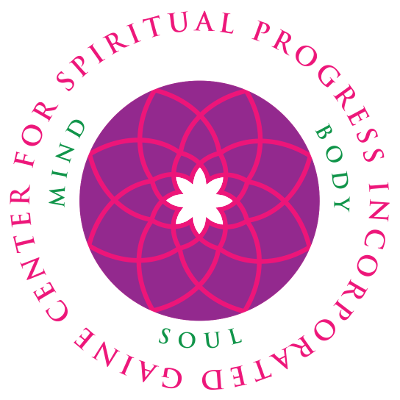
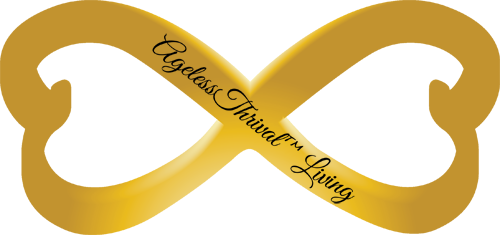
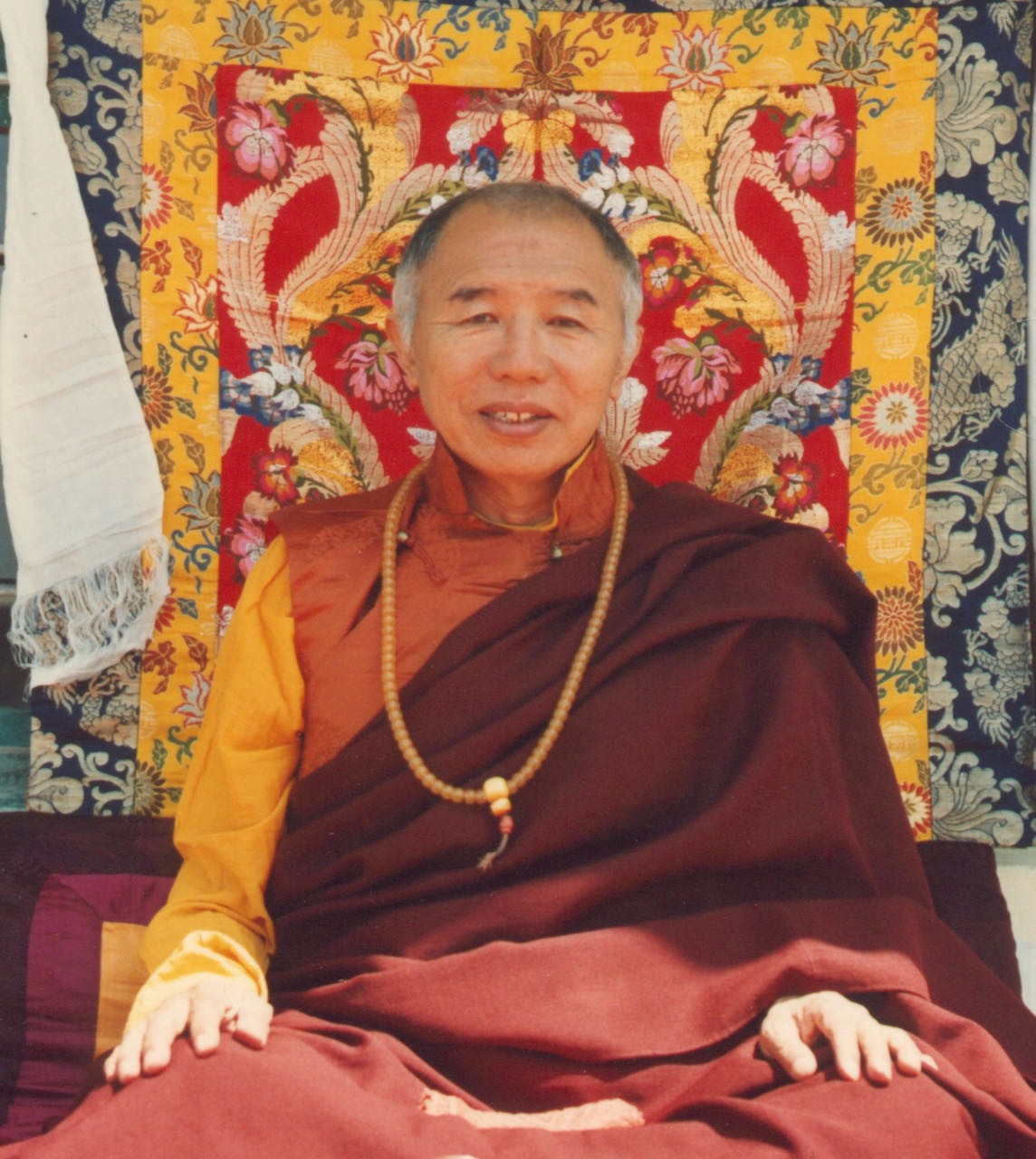
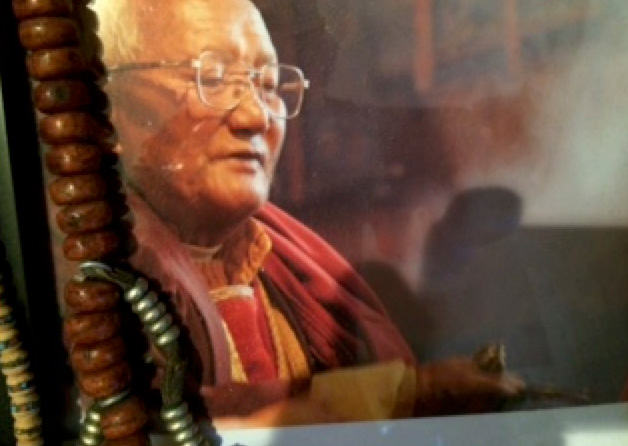
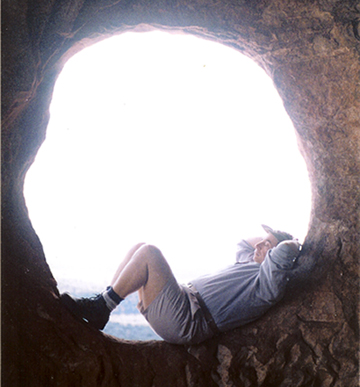 Tom Kenyon's Hathor Message of Trilliums and Coherent Emotion
Tom Kenyon's Hathor Message of Trilliums and Coherent Emotion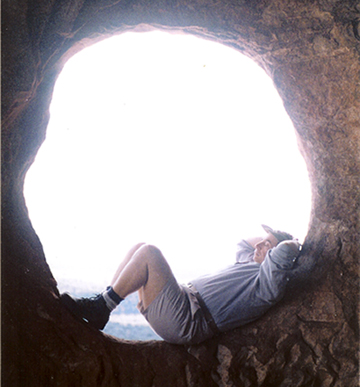 A Hathor Planetary Meditation
A Hathor Planetary Meditation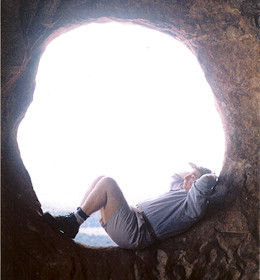 A Hathor Planetary Message through Tom Kenyon
A Hathor Planetary Message through Tom Kenyon